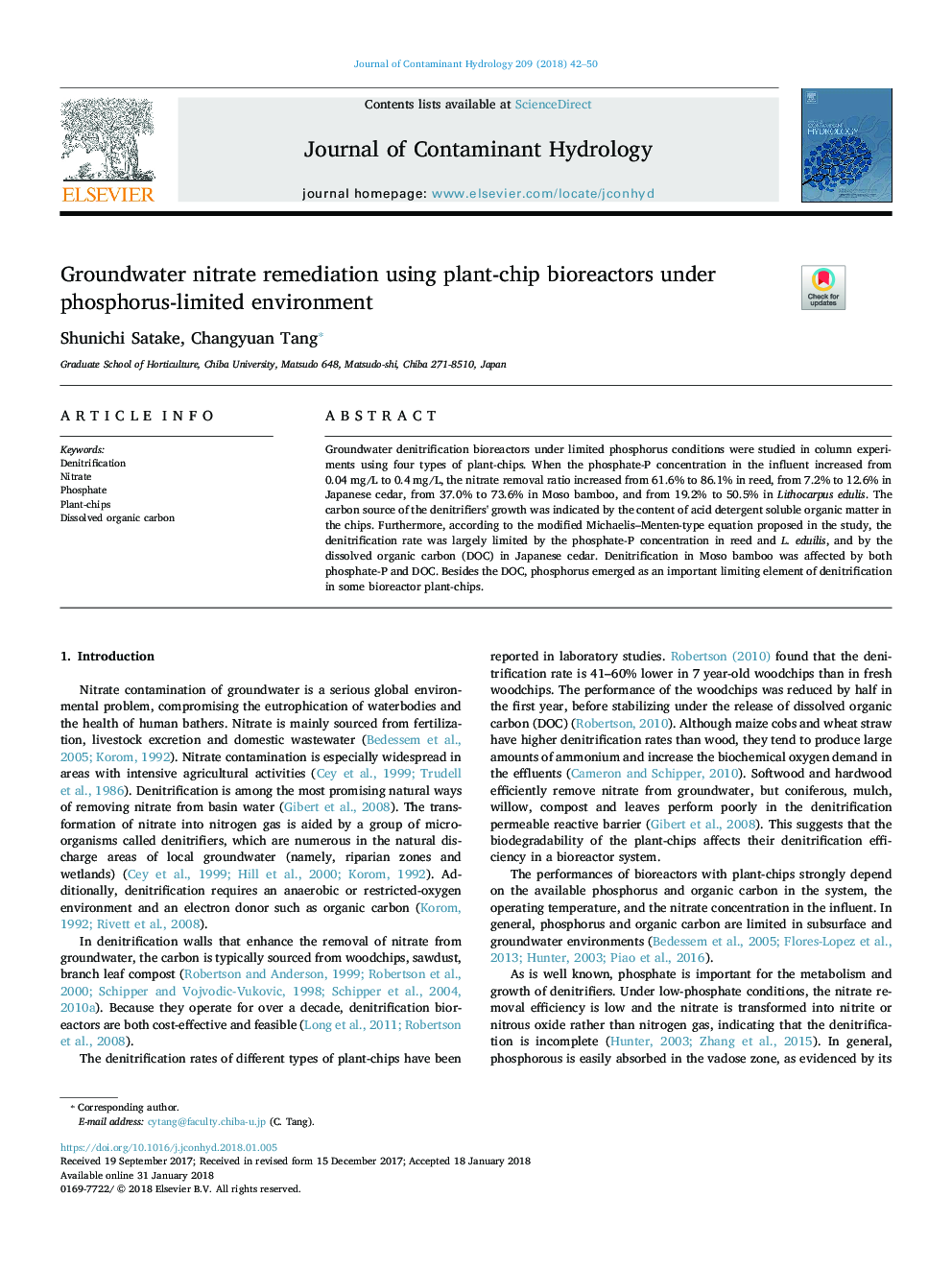| Article ID | Journal | Published Year | Pages | File Type |
|---|---|---|---|---|
| 8885845 | Journal of Contaminant Hydrology | 2018 | 9 Pages |
Abstract
Groundwater denitrification bioreactors under limited phosphorus conditions were studied in column experiments using four types of plant-chips. When the phosphate-P concentration in the influent increased from 0.04Â mg/L to 0.4Â mg/L, the nitrate removal ratio increased from 61.6% to 86.1% in reed, from 7.2% to 12.6% in Japanese cedar, from 37.0% to 73.6% in Moso bamboo, and from 19.2% to 50.5% in Lithocarpus edulis. The carbon source of the denitrifiers' growth was indicated by the content of acid detergent soluble organic matter in the chips. Furthermore, according to the modified Michaelis-Menten-type equation proposed in the study, the denitrification rate was largely limited by the phosphate-P concentration in reed and L. eduilis, and by the dissolved organic carbon (DOC) in Japanese cedar. Denitrification in Moso bamboo was affected by both phosphate-P and DOC. Besides the DOC, phosphorus emerged as an important limiting element of denitrification in some bioreactor plant-chips.
Related Topics
Physical Sciences and Engineering
Earth and Planetary Sciences
Earth-Surface Processes
Authors
Shunichi Satake, Changyuan Tang,
